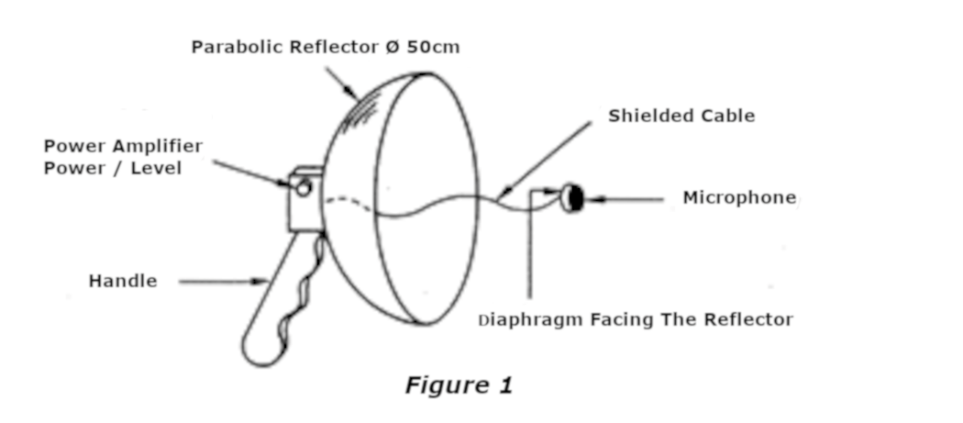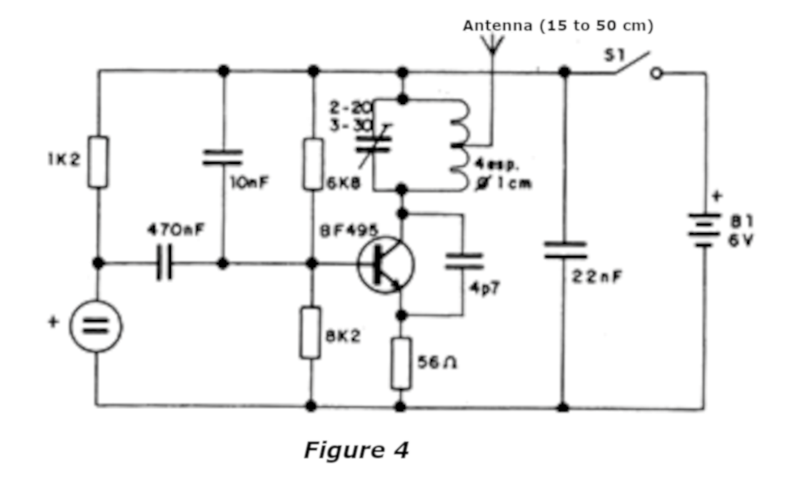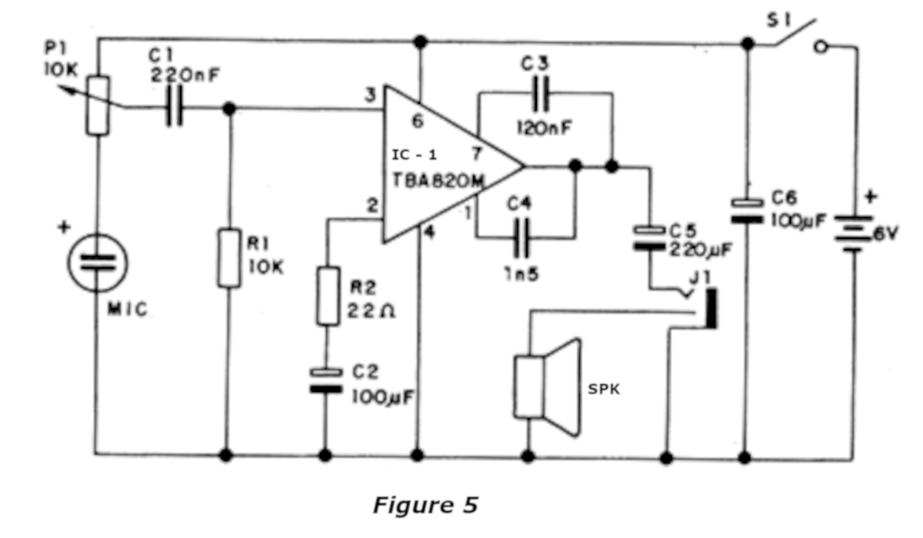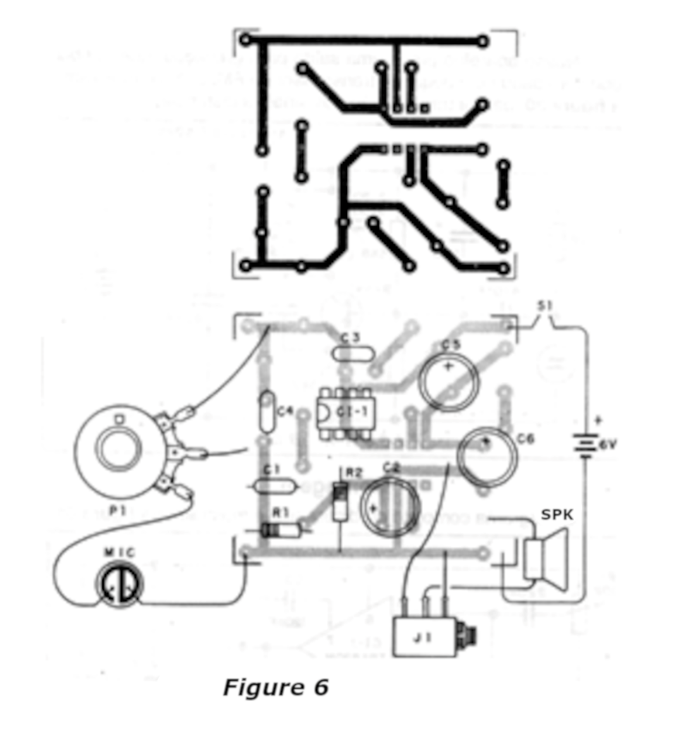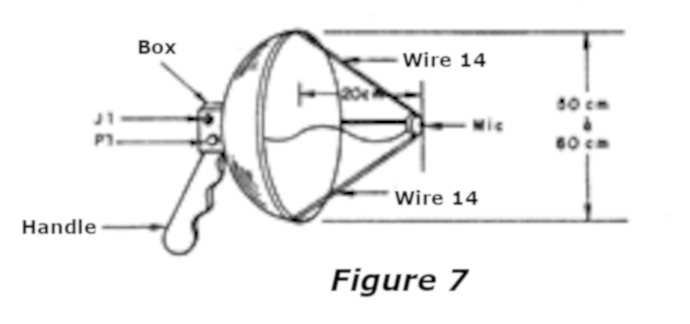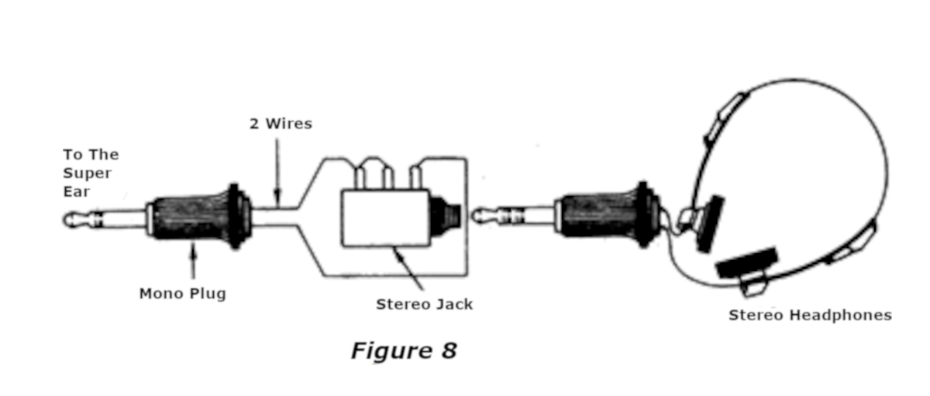The result of that appears in the project we describe that using a reflector, a supersensitive microphone and an integrated circuit, we achieve a Super Ear capable of capturing distant sounds and even through walls, thus facilitating hidden listening, recordings of bird sounds and many exciting experiments.
Again, the basis of the project is the TBA820M integrated circuit, which in addition to being able to be powered by ordinary batteries, leading us to a fully portable unit (ideal for fieldwork), also allows a highly compact and light assembly, as suggested by the final aspect of the device shown in Figure 1.
We observed that the output of the TBA820 in this project can be performed either through a speaker or a headphone and applied to the input of an ordinary recorder with excellent gain.
The main features of this project are:
Characteristics
Supply voltage: 6V
Current consumption: 20 to 100 mA (depends on the load)
Output impedance: 4 to 32 ohms
Gain: greater than 80 dB
Operation
The TBA820M is already an excellent performance amplifier when connecting a good microphone to its input, such as a small electret microphone. However, we can get a great directivity and much greater gain if we use additional resources to capture sounds.
In this project, an interesting possibility is concentrating sound energy in a kind of acoustic "lens"; a parabolic system that works exactly as in satellite dishes for the reception of TV signals.
These receptors are not the parabolic "dish" we see, but the small devices placed in the focus area of the parabola that, due to their small dimensions, could not capture much energy by themselves. See Figure 2.
The purpose of the parabolic "dish" is to capture the energy that comes in the form of very short length waves and reflecting them in a specific direction, makes them converge on the receptor. The parabolic format is chosen because this type of curvature guarantees the reflection of the signals in a single point called the focus.
In optics, reflector telescopes work in the same way, focusing light on a small mirror and then on the eyepiece, thus obtaining an amplified image. (Figure 3).
We can achieve the same with acoustic signals by placing a microphone in the focus of a parabolic reflector, which is our project's design. The reflector, which can be constructed of any rigid metal, concentrates sounds on the microphone, significantly increasing its sensitivity and thus also allowing only sounds coming from a specific direction to be amplified.
The size of the reflector, concerning the size of the microphone, determines the system's gain.
Thus, if an electret microphone has a diameter of approximately 8 mm, which is equivalent to an area of 1 cm2 (approximately), using a parabola of 80 cm in diameter, which is equivalent to 1 m2, or 10,000 cm2, we will have a 10,000 times effective gain (6 = 20 log (10,000/1)).
In short, the gain will be the greater the size of the parable used. But there is a limit. If the parabolic reflector is too large, we will also amplify the thermal noise that will appear in the headphones or speakers in the form of a loud hiss. With excessive amplification, the very sound we want to record will be covered up by the white noise generated in the environment and cannot be eliminated.
The limit to get the proper operation is around half a meter in diameter for the reflector, even because a huge dish will also be difficult to transport.
Our device provides a recording output, which can also be connected to a small FM transmitter, as shown in Figure 4, for the transmission of signals remotely.
Assembly
The complete diagram of the device is shown in Figure 5.
By arranging the components on a printed circuit board, as shown in Figure 6, we get a very compact and portable assembly.
The integrated circuit can be socket mounted, and the electrolytic capacitors are for a working voltage of 6V or more. The resistors are 1/8W, and the smaller capacitors can be ceramic or polyester. The power supply consists of 4 small cells. The main switch is conjugated to the P1 volume control. The mechanical part, which is the parabolic reflector with the microphone fixed in its focus, is shown in Figure 7.
The amplifier is installed in a small plastic box and secured to the back of the reflector, along with a handle that facilitates pointing the device to the direction where the sounds to be picked up are coming.
The low impedance headphone should be monophonic and preferably padded. Standard stereo headphones without padding have two problems: playback in a single channel and microphony (strong whistle) given by the device's very high sensitivity. In Figure 8, we show how to adapt a stereo jack to a mono plug to facilitate the use of such headphones. The reader should be careful not to turn up all the volume, but only to the maximum point where microphony does not occur.
Usage
For simple listening, just put the headphones on your ears, point the reflector in the direction you want to capture sounds and turn up the volume until you get the best reception. Eventually, some components can be replaced to improve performance depending on the work, i.e., the predominance of bass, medium or acute sounds.
Thus, for bird recordings (acute sounds), C4 and 03 can be reduced, while for conversation or bass sounds, C3 and C4 can eventually be increased.
To take recordings, connect the headphone output to the input of a sound recorder and connect the headphones to the recorder's monitor output. Then adjust P1 of the electronic ear for greater sensitivity without distortion.
IC-1 - TBA820M - integrated circuit
MIC - two-terminal electret microphone
S1 - simple switch
B1 - 6V - 4 type AA batteries
P1 - 10k - potentiometer (ganged to S1)
R1 - 10k - resistor (brown, black, orange)
R2 - 22 ohms - resistor (red, red, black)
C1 - 220 nF (224 or 0.22) - ceramic or polyester capacitor
C2 - 100 µF x 6V - electrolytic capacitor
C3 - 120 nF - ceramic capacitor (124 or 0.12)
C4 - 1 n5 - ceramic capacitor
C5 - 100 µF - 6V electrolytic capacitor
Miscellaneous: printed circuit board, mounting box, battery holder, parabolic reflector, shielded microphone cable, output jack, low impedance headphone, wires, solder, etc.

